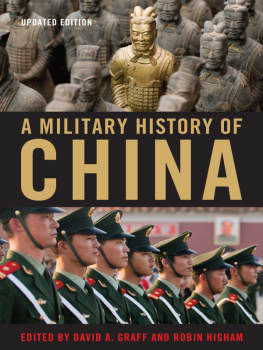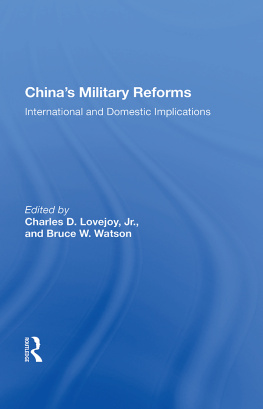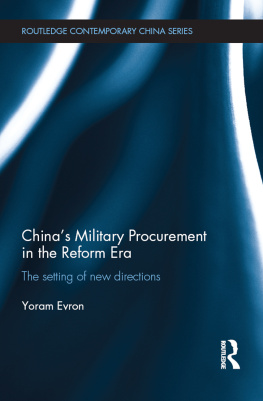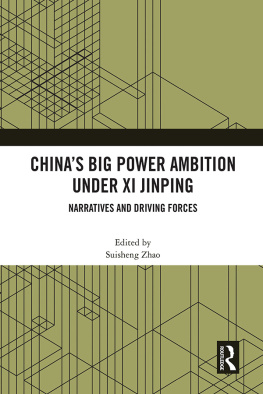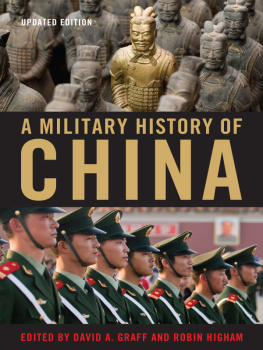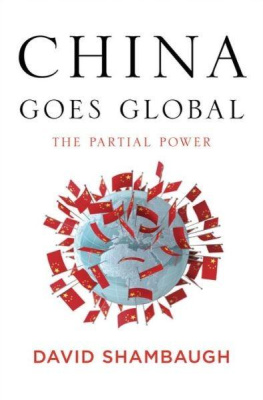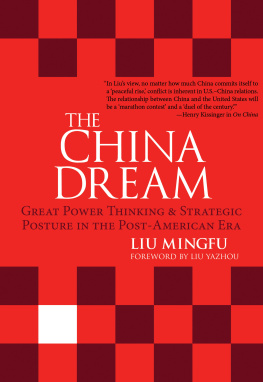ONE
Introduction
Robin Higham and David A. Graff
Armed conflict has always played an important role in Chinese history. Most of China's imperial dynasties were established as a result of success in battle, and the same may be said of the Nationalist (Guomindang KMT) and Communist regimes in the twentieth century. Periods of dynastic decline were marked by great peasant rebellions, and the collapse of central authority repeatedly gave rise to prolonged, multicornered power struggles between regional warlords.
Questions of military institutions and strategy have always occupied a prominent place in Chinese political thought, and the armed confrontation between the sedentary Chinese state and the nomadic peoples of the Inner Asian steppe was one of the most fundamental themes of Chinese history prior to the twentieth century.
China's modernization efforts in the nineteenth and twentieth centuries were stimulated by repeated defeats at the hands of the Western powers (and later Japan), beginning with the Opium War of 1839-1842, and by the need to respond to the challenge of domestic rebellions such as that of the Taipings (1850-1864). Indeed, it is arguable that the pursuit of wealth and power has been a common denominator of all Chinese regimes from the twilight of the Qing dynasty to the People's Republic (PRC) in the post-Deng era.
In spite of this history, the existing literature has tended to neglect or downplay the role of war and the military. Works on premodern China have emphasized (and reflected) the Confucian pacifism and antimilitary bias of the scholar-official class, while the literature on the nineteenth and twentieth centuries gives pride of place to intellectual, cultural, and political developments. The English-language literature on Chinese military history, ancient or modern, is extremely limited; for premodern China in particular, there is only a handful of books, several of which are now out of print. This volume is intended to fill the gap by offering a wide-ranging overview of the major themes, issues, and patterns of Chinese military history, from the first millennium B.C.E. to the present day. It is designed to provide nonspecialists and newcomers to the subject with basic orientation in fifteen key areas, and each chapter concludes with suggestions for further reading and research.
THE LAY OF THE LAND
The People's Republic of China covers roughly the same land area as the United States, and is somewhat larger than Europe (from Moscow west to the Atlantic). In contrast to the United States and Europe, however, China is not richly endowed with arable land. Most of the country's territory is mountain, desert, or arid plateau, and there is no counterpart to the vast arable expanse of the American Midwest. The largest zone of flat, fertile land, the North China Plain along the lower reaches of the Yellow River, is only a little larger than than the combined land area of Illinois and Iowa. In southern and western China, arable land (and human population) is concentrated in the much smaller river valleys and coastal lowlands. Population is especially sparse in the vast, arid western territories of Xinjiang, Tibet, and Qinghai, which account for nearly half of China's total land area. The country's highest mountains are found in the far west, in the Himalaya and Pamir ranges along the fringes of the Tibetan plateau, and the greatest rivers, the Yellow and the Yangzi, flow eastward from the Tibetan highlands to the Pacific Ocean. These western territories were little touched by Chinese settlement until very recent times. Together with the Gobi Desert in today's Mongolia, they formed an all but insurmountable barrier to the westward and northward expansion of the sedentary, agricultural lifestyle of the Han Chinese.
For most of China's history, these western and northern territories were left in the hands of peoples whose languages, cultures, and ways of life were dramatically different from those of their Han neighbors. Some, such as the Iranian and Turkish oasis dwellers of Xinjiang and the Tibetans of the Yarlung Zangbo (Brahmaputra) valley, were small-scale agriculturalists, but the dominant mode of livelihood was pastoral nomadism. The outer regions were linked to the Chinese heartland by the exchange of horses and other livestock for the products of China's farmers and artisans, including grain, silk, and metalware. Trade in luxuries extended even farther, along the fabled Silk Road that connected China with the Middle East and the Mediterranean world. Given the vast distances, harsh landscapes, and tough customers along the way, however, there was very little direct contact between the two ends of the Eurasian landmass before Europeans found their way to China by sea in the early years of the sixteenth century.

Map 1.2 Relative size of China and the 48 contiguous United States. Adapted by Don Graff based upon Interpreting China's Grand Strategy, Michael D. Swaine and Ashley J. Tellis (Santa Monica, CA: Rand Corporation, 2000)
The territory of today's China can be divided into two zones. The first, China proper, was and is densely populated, agricultural, and inhabited mainly by the Han majority; in imperial times its people were ruled directly by the Son of Heaven. The second zone consists of Tibet, Qinghai, Xinjiang, Inner Mongolia, and the three Manchurian provinces; in earlier times this zone also included the territory that is now the independent republic of Mongolia. These lands were (and in some cases still are) very sparsely populated and inhabited by non-Han ethnic groups. At some times in Chinese history these areas paid tribute to the Middle Kingdom and were treated as vassal states; at other times, however, they were fiercely independent and threatening. The power of China in this region has fluctuated greatly over the centuries. The Former Han and Tang dynasties dominated Xinjiang, but Song and Ming did not. Tibet was first attached to the empire by the Mongol Yuan dynasty, but recovered its independence when the Yuan gave way to a new native Chinese dynasty, the Ming. Today's PRC owes its shape largely to the Manchus, who conquered China and established the Qing dynasty in 1644. They brought their own homeland, Manchuria, into the empire, and went on to subdue Mongolia, Tibet, and Xinjiang. Of this Qing legacy only outer Mongolia has been lost, primarily as a result of Russian pressure in the early part of the twentieth century.
The theater in which Chinese military history was acted out included not just the territory of today's China (and Mongolia), but covered a vast, subcontinental region of East Asia. The Korean peninsula was administered as an integral part of the Han empire, and was the scene of Chinese military interventions by the Sui and Tang dynasties during the seventh century, by the Ming dynasty in the 1590s, by the Qing in the 1890s, and by the Communists in the 1950s. Northern Vietnam, including today's Hanoi, was ruled by the Qin, Han, and Tang dynasties, and Chinese armies sometimes penetrated even farther south. Han and Tang armies pushed deep into what is now the territory of the former Soviet republics of Central Asia. Mongol-led forces based in China invaded Japan, Burma, and Java in the thirteenth century, and a Qing army marched into Nepal in the 1790s. In the first half of the fifteenth century the Ming treasure fleets, led by Zheng He and his associates, explored the Indian Ocean littoral, and in the last three decades the People's Republic has been striving to establish its military dominance in the South China Sea. In periods when China was united and strong, most military encounters took place along the periphery as the country's rulers sought to assert their suzerainty over neighboring states and peoples. During periods of division and civil war, on the other hand, the locus of most military action was the densely populated heartland of China proper.

